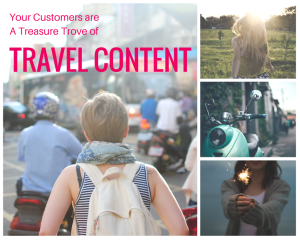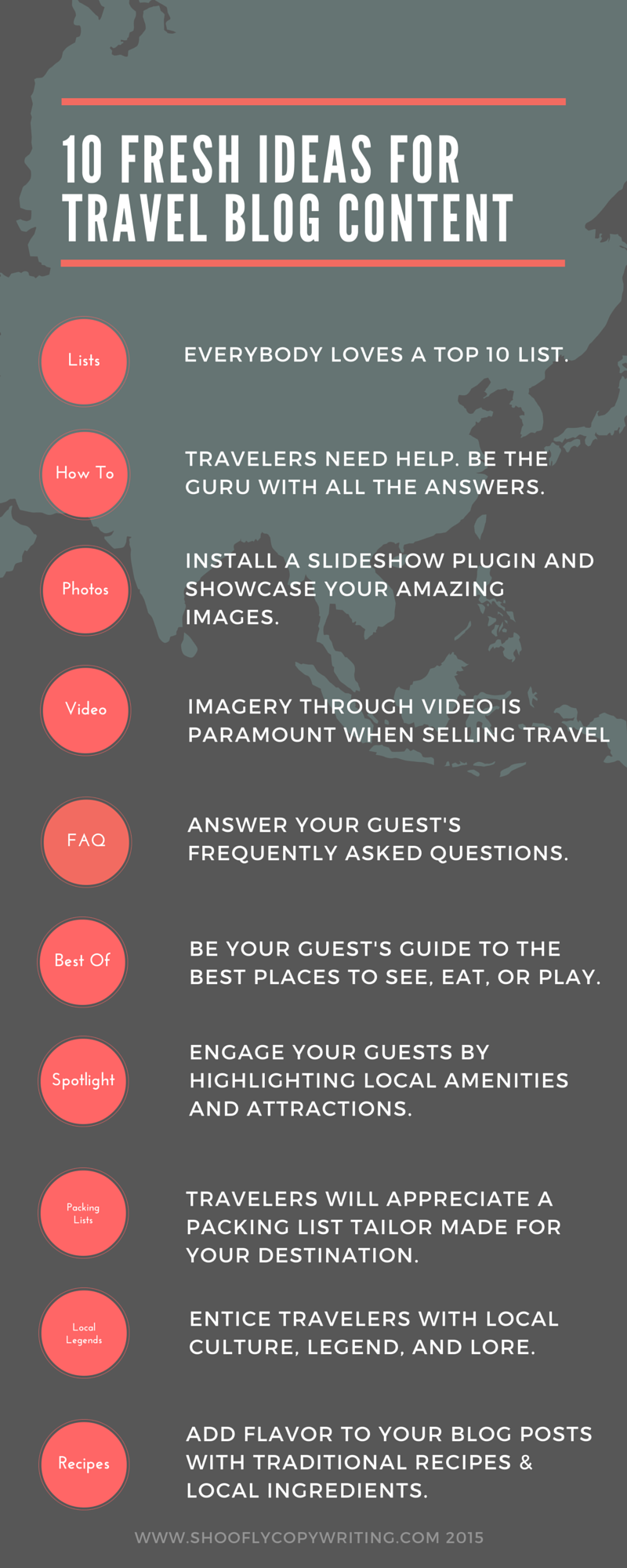
Creating great travel content and posting it to your social media pages doesn’t necessarily mean that travelers are engaging with it…or even seeing it. That’s why it is so important to have a plan. Travel has almost limitless potential for content, but understanding how and where to share it is a huge factor in how successful it will be.
Think of it like this: If your website is your company’s front door, then your blog and social media channels are your living room. It’s that comfortable spot where stories are told, questions are answered, ideas are shared…and trust is built. So, how do you build that sense of comfort and trust? Here are 9 best practices to get you started.
1. Know Your Ideal Traveler
The whole purpose of content marketing is to create value for your guests by sharing relevant and educational information. If you don’t have a solid understanding of your customer, it’s going to be really difficult to give them the help they’re looking for. What do your typical guests like to do? What are some of their most common requests or frequently asked questions?
2. Start Collecting Ideas
Brainstorm various topics and sub-topics around your destination. If you’re feeling stuck, try mind-mapping by starting with one of your key attractions, and let your mind flow from there. Or check out last week’s post full of fresh ideas to get the creative juices flowing.
3. Create a Conversation
Now take those ideas you came up with in #2 and start a conversation. Just be sure to make it about your customer and their needs, not about you. Leave your sales pitch at the door. Be authentic and above all helpful when providing travelers with the information and inspiration they need for planning their trip.
4. Optimize for SEO
When creating your posts make sure you use relevant keywords that your customers are actively searching for online, e.g., “Florida beaches,” “Colorado mountains,” etc. And don’t forget to optimize your content for searches by including your destination, business name, attractions, activities, tags, hashtags — whatever is appropriate for the social media platform you’re using.
5. Share User Generated Content
Invite your guests to share their pictures and stories on your social media channels. All of a sudden, your customers become your brand ambassadors and engage in word of mouth marketing. Remember that your guests are the heroes of the story. Giving them the power to tell their own stories can lead to massive levels of engagement.
6. Know Which Channels are Best for Different Types of Content
Every social media platform has its own rules and formulas. For example Facebook and Instagram are great for posting and sharing guests’ images. Twitter, on the other hand, is useful for posting timely, up-to-the-minute info for travelers en route. Spending time on all sites, along with some trial and error, will help you figure this out.
7. Develop a Posting Schedule
The number one obstacle to developing a content plan and sticking to it is finding the time. As a hospitality or tourism professional, you’re busy. Determine how often you think you should post, develop an editorial calendar, and then stick to it. Just like you clean a room or check in a guest, posting to social media has to be a priority.
8. Measure It
You don’t know whether or not your content marketing is working if you don’t measure it. Decide on your goals for social media and the metrics you want to measure like reach, post views, traffic to your website, or likes and shares. This will help you use your time and resources wisely and effectively.
9. Don’t Be Afraid to Experiment
Explore various strategies and social media channels. Mix things up until you figure out what works best for your niche, your business, and your customers.
The most powerful aspect of content marketing is how you help your customers. With a little bit of effort and commitment, you can take advantage of the endless possibilities that content marketing has to offer.
Get in touch with Shoofly Copywriting to find out how I can help develop your content marketing strategy and grow your online presence.









